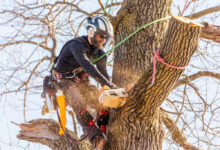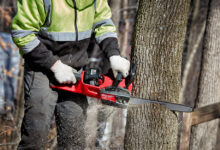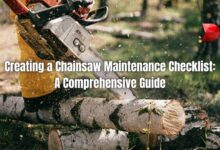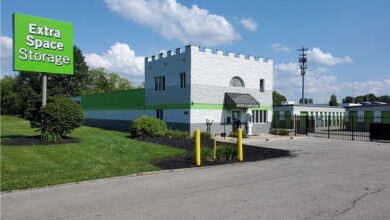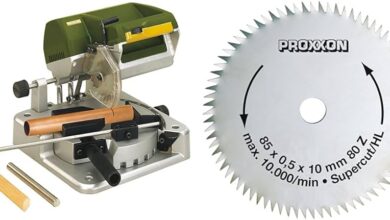Contents
Introduction
Chainsaws are indispensable tools for lumberjacks, arborists, and homeowners alike. However, even the most durable chainsaw can only perform optimally with proper maintenance. One crucial aspect of chainsaw maintenance is bar maintenance. A well-maintained bar ensures smooth cutting, reduces wear and tear, and extends the lifespan of your chainsaw. Here’s an in-depth guide to chainsaw bar maintenance tips.
Understanding the Chainsaw Bar
The chainsaw bar, also known as the guide bar, is the long, flat metal part that holds the chain. It guides the chain as it cuts through wood, ensuring straight and precise cuts. The bar is made of durable materials like steel or aluminum and is designed to withstand the rigors of cutting.
There are two main types of chainsaw bars: solid bars and laminated bars. Solid bars are made from a single piece of metal, while laminated bars are made by bonding multiple layers of metal together. Laminated bars are often lighter and more durable than solid bars.
The size of the chainsaw bar is measured in inches and typically ranges from 12 inches to 36 inches. The length of the bar determines the cutting capacity of the chainsaw, with longer bars allowing for larger cuts.
Importance of Chainsaw Bar Maintenance
Regular chainsaw bar maintenance is crucial for several reasons:
- Smooth Cutting: A well-maintained bar ensures that the chain moves smoothly and cuts efficiently, reducing friction and wear on the chain.
- Reduced Wear and Tear: Proper bar maintenance helps minimize wear and tear on the bar itself, extending its lifespan and reducing the need for costly repairs or replacements.
- Increased Chainsaw Lifespan: By maintaining the bar properly, you can extend the overall lifespan of your chainsaw, ensuring it operates at peak performance for longer.
Essential Chainsaw Bar Maintenance Tips
Cleaning the Chainsaw Bar
Regularly cleaning the chainsaw bar is essential to remove dirt, debris, and sap that can accumulate over time. Use a clean cloth or brush to wipe down the bar, removing any visible particles. You can also use a mild detergent and water solution for a more thorough cleaning.
Lubricating the Chainsaw Bar
Lubricating the chainsaw bar is crucial to reduce friction between the bar and the chain. Use a high-quality chainsaw bar oil that is specifically designed for this purpose. Apply oil regularly to the bar, following the manufacturer’s recommendations.
Sharpening the Bar Rails
Over time, the bar rails can become dull, which can lead to poor cutting performance. Sharpening the bar rails helps maintain their sharpness and ensures optimal cutting. Use a file or grinder specifically designed for sharpening chainsaw bars.
Inspecting the Bar Nose Sprocket
The bar nose sprocket is a critical component that drives the chain. Regularly inspect the sprocket for wear or damage. If the sprocket is damaged, it can cause the chain to slip or break, posing a safety hazard. Replace the sprocket if necessary.
Tensioning the Chainsaw Chain
Proper chain tension is essential for safe and efficient chainsaw operation. Regularly check the chain tension and adjust it as needed. Too loose a chain can slip or come off the bar, while too tight a chain can put excessive strain on the chainsaw and reduce its performance.
Replacing the Chainsaw Bar
Even with proper maintenance, chainsaw bars can eventually become worn or damaged beyond repair. In such cases, it’s necessary to replace the bar. When replacing the bar, ensure that you select the correct size and type of bar for your chainsaw.
Table: Chainsaw Bar Maintenance Tips
| Maintenance Task | Frequency | Benefits |
|---|---|---|
| Cleaning | Regularly | Removes dirt and debris, improving cutting performance |
| Lubricating | Regularly | Reduces friction, extending bar lifespan |
| Sharpening the Bar Rails | As needed | Maintains sharpness, ensuring optimal cutting |
| Inspecting the Bar Nose Sprocket | Regularly | Prevents chain slippage or breakage |
| Tensioning the Chainsaw Chain | Regularly | Ensures safe and efficient operation |
| Replacing the Chainsaw Bar | As needed | Restores optimal cutting performance |
FAQs about Chainsaw Bar Maintenance
- How often should I clean my chainsaw bar?
Regularly, after every use or when noticeable dirt or debris accumulates.
- What type of oil should I use to lubricate my chainsaw bar?
Use high-quality chainsaw bar oil specifically designed for this purpose.
- Can I use a regular file to sharpen my chainsaw bar rails?
No, use a specialized file or grinder designed specifically for sharpening chainsaw bars.
- How do I know when to replace my chainsaw bar?
Replace the bar when it becomes excessively worn, damaged, or bent beyond repair.
- Is it safe to operate a chainsaw with a loose chain?
No, a loose chain can slip or come off the bar, posing a safety hazard.
- How can I extend the lifespan of my chainsaw bar?
Regularly clean, lubricate, and inspect the bar, and sharpen the rails as needed.
- What are the signs of a damaged bar nose sprocket?
Excessive wear, tooth damage, or bending.
- How do I choose the correct size chainsaw bar for my chainsaw?
Refer to your chainsaw’s operator’s manual for the recommended bar size.
- Can I use the same chainsaw bar for different chains?
Yes, as long as the bar size and chain pitch match the specific chainsaw model.
- How often should I check the chain tension?
Regularly, before each use and after extended cutting sessions.
- What are the consequences of operating a chainsaw with an excessively tight chain?
Increased wear on the chainsaw and reduced cutting efficiency.
- Is it okay to use a blunt chainsaw bar?
No, a blunt bar reduces cutting efficiency and puts excessive strain on the chainsaw.
- Can I sharpen the chainsaw bar rails myself?
Yes, with the proper tools and safety precautions.
Conclusion
Proper chainsaw bar maintenance is essential for the safe, efficient, and long-lasting operation of your chainsaw. By following these tips and guidelines, you can ensure that your chainsaw bar remains in optimal condition, delivering consistent cutting performance and extending its lifespan. Remember, regular maintenance is the key to maximizing the potential of your chainsaw and ensuring its reliable operation for years to come.
By investing time and effort in chainsaw bar maintenance, you can enjoy a safer, more efficient, and rewarding chainsaw experience. So, embrace these maintenance practices, and let your chainsaw become the powerful and dependable tool it was meant to be.
Disclaimer: The information provided in this article is intended solely for informational purposes and does not constitute professional advice or recommendations. Always consult the manufacturer’s instructions and safety guidelines for specific maintenance procedures and precautions related to your chainsaw model.


